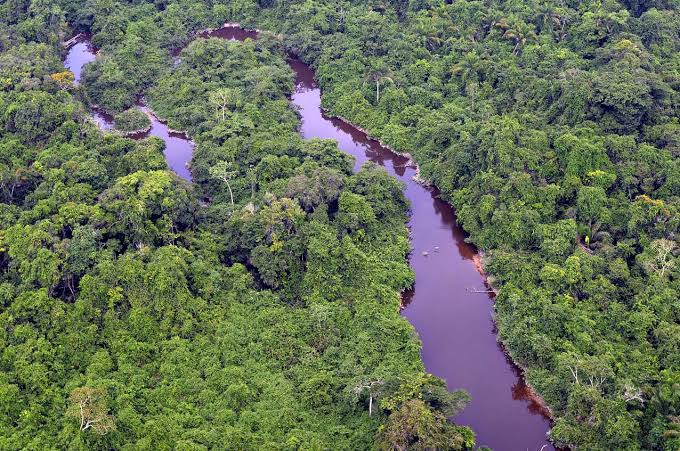Today, May 22, is the International Day for Biological Diversity, writes Dr Rhett Ayers Butler, Founder and CEO of Mongabay, a non-profit organisation.
To mark the occasion, here’s a look at the world’s most biodiverse countries & territories, using two approaches- Total number of species and species richness relative to land or marine area.
These rankings are always contentious.
People are often disappointed when a country they perceive as highly biodiverse doesn’t rank as high as expected. But rest assured, there’s no agenda here. The methodology involves compiling species count data from leading sources for each country/territory.
That said, the data has limitations. Countries like Singapore & European nations tend to have more comprehensive biological surveys than most African nations, for example. As a result, undercounts in some places may affect their rankings. The data also does not account for endemism, nor is there sufficiently comprehensive data on invertebrates, microorganisms, and fungi to include them. At best, these numbers should be viewed as a proxy for biodiversity.
Another caveat: Many islands in regions like the Caribbean & the Pacific are not independent nations & are therefore classified under the Exclusive Economic Zones (EEZs) of other countries. This affects calculations of marine biodiversity per unit area, as EEZ boundaries are used in those comparisons.
Finally, many political boundaries are artificial constructs, so one could argue that using “country” on any basis is inherently flawed.
Average share (%) of biodiversity across amphibians 🐸, birds 🐦, fish 🐟, mammals 🐘, reptiles 🐢, and vascular plants 🌺.
1 🇧🇷 Brazil 13
2 🇮🇩 Indonesia 10.4
3 🇨🇳 China 9.8
4 🇨🇴 Colombia 9.5
5 🇵🇪 Peru 8.6
6 🇲🇽 Mexico 8.3
7 🇦🇺 Australia 8.1
8 🇮🇳 India 7.6
9 🇪🇨 Ecuador 7.5
10 🇺🇸 USA 6.7
11 🇻🇪 Venezuela 6.4
12 🇿🇦 South Africa 5.6
13 🇵🇬 PNG 5.5
14 🇧🇴 Bolivia 5.4
15 🇻🇳 Vietnam 5.4
16 🇨🇩 Congo-DRC 5.4
17 🇲🇾 Malaysia 5.3
18 🇹🇿 Tanzania 5.2
19 🇹🇭 Thailand 5
20 🇲🇲 Myanmar 5
21 🇦🇷 Argentina
22 🇵🇭 Philippines
23 🇰🇪 Kenya
24 🇵🇦 Panama
25 🇨🇲 Cameroon
26 🇯🇵 Japan
27 🇨🇷 Costa Rica
28 🇲🇬 Madagascar
29 🇦🇴 Angola
30 🇲🇿 Mozambique
Species richness relative to land-sea (TIA+EEZ) area
1 🇸🇬 Singapore
2 🇧🇳 Brunei
3 🇸🇿 Eswatini
4 🇷🇼 Rwanda
5 🇧🇮 Burundi
6 🇲🇪 Montenegro
7 🇧🇹 Bhutan
8 🇸🇮 Slovenia
9 🇬🇲 Gambia
10 🇲🇰 North Macedonia
11 🇧🇿 Belize
12 🇮🇱 Israel
13 🇦🇲 Armenia
14 🇱🇧 Lebanon
15 🇩🇯 Djibouti
Species richness / land area (no fish)
1 🇸🇬 Singapore
2 🇸🇨 Seychelles
3 🇵🇼 Palau
4 🇭🇰 Hong Kong
5 🇫🇲 Micronesia
6 🇧🇳 Brunei
7 🇹🇹 Trinidad & Tobago
8 🇬🇲 Gambia
9 🇵🇷 Puerto Rico
10 🇸🇻 El Salvador
11 🇱🇧 Lebanon
12 🇯🇲 Jamaica
13 🇧🇿 Belize
14 🇲🇪 Montenegro
15 🇸🇿 Eswatini
Species richness / land area (Only megadiverse, >3%)
1 🇨🇷 Costa Rica
2 🇵🇦 Panama
3 🇹🇼 Taiwan
4 🇬🇫 French Guiana
5 🇬🇹 Guatemala
6 🇭🇳 Honduras
7 🇪🇨 Ecuador
8 🇳🇮 Nicaragua
9 🇺🇬 Uganda
10 🇸🇷 Suriname
Picture: WWF Brazil

